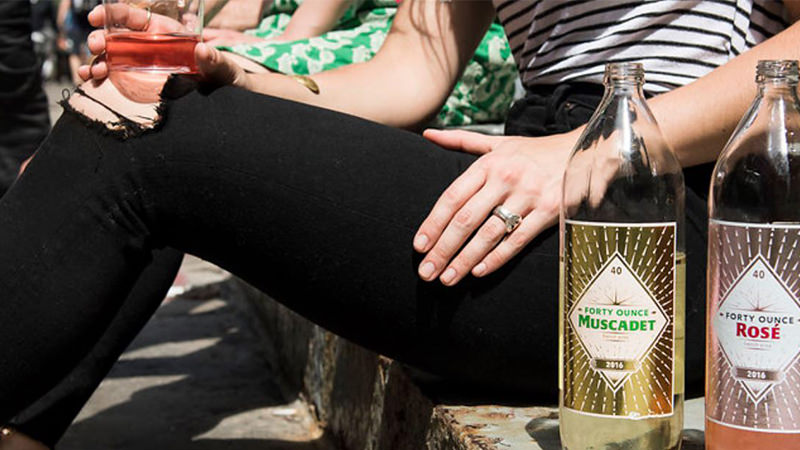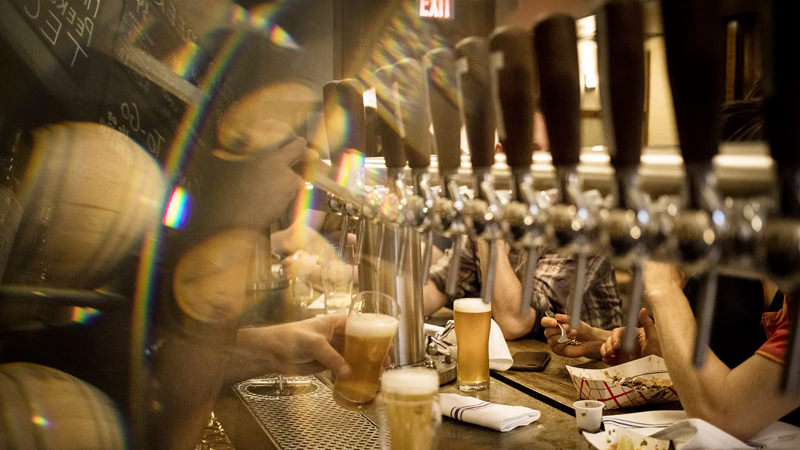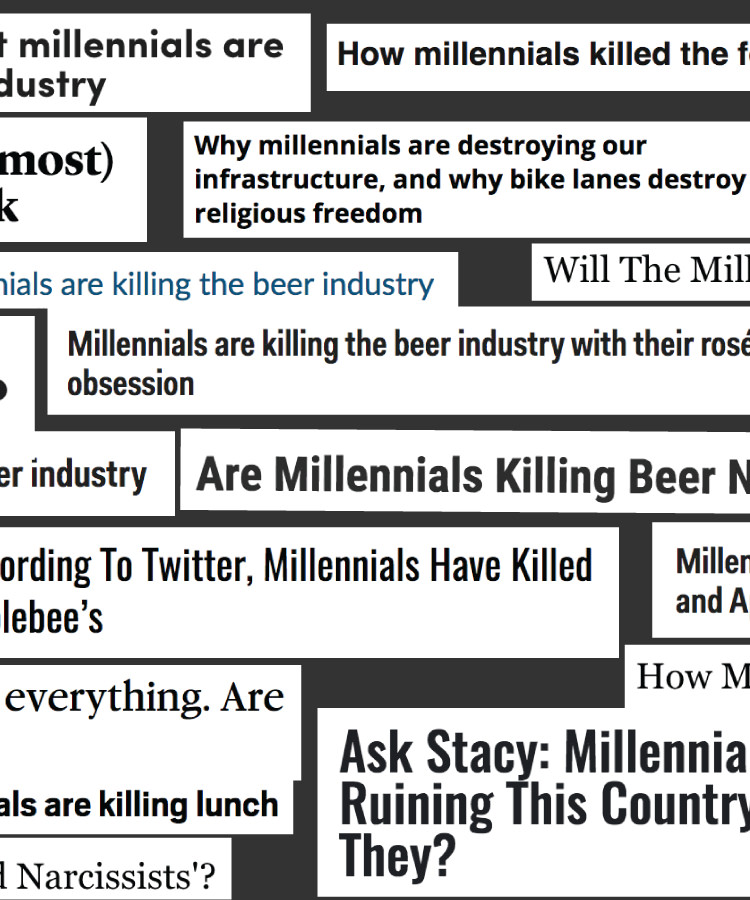Millennials get blamed for a lot of things. Participation trophies, head-scratching workplace expectations, and now beverage and business publications proclaim they’re killing the beer industry, too.
It’s true the beer business has some introspection to do. Sales are losing ground to wine and spirits, and the growth of craft beer sales is slowing dramatically.
Fingers wag at millennials. Millennials drink more wine. Millennials trade beer for pot. Millennials fail to embrace craft beer like their older counterparts. Millennials don’t drink that much at all.
Does conventional wisdom equal fact? Well, yes. And no.
Here’s the deal. Millennials are partly responsible for beer’s falling fortunes. But as with most issues, the truth lies in a thicket of nuance.
For starters, millennial birth dates scatter all over the calendar, ranging from 1977 to 1982 at the outset to between 1995 and 2004, depending on who’s counting. The oldest possible millennial turns 40 this year. The youngest, 13. Studies indicate that millennials aged 25 to 35 prefer wine and spirits to beer. Meanwhile, 18 to 25-year-old millennials drink less alcohol than anyone but their grandparents.
Because there is no popular verbiage used to subcategorize millennials (and no one, I mean no one, can agree on parameters for Gen Y or Z), their habits are difficult to summarize in a headline. It’s both inaccurate and misleading to distill behaviors of a diverse demographic spanning nearly 30 years into a single conclusion about beer purchases.
One conclusion we can draw is that millennials tend to monitor health and wellness pretty conscientiously. This is the community that brought us Dry January and Skinnygirl vodka sodas. It’s logical that these wellness-minded drinkers would embrace the fact that wine’s higher ABV punches a quicker and less caloric buzz than most beers.
Aside from Michelob Ultra, whose popularity has returned with a shocking vengeance, most beer marketing focuses more on ingredients and flavor than fitness. Hence, conventional and craft beers lose market share to wine and spirits, while light macro beer attracts those who fear highly caloric and alcoholic IPAs and Belgians.
Moreover, younger millennials may have grown up in houses stocked with craft beer. Nothing renders a limited-release IPA (or anything, for that matter) uncool faster than parental precedent.

Wine is also starting to beat beer at its own promotional game. Never before have drinkers had so many affordable and easy-to-access wines from so many countries with so many label-art cartoons. Wine, like beer, offers endless possibility for discovery. It’s now finally figuring out how to speak the language of fun, casual, portable, and interactive. (For further proof, consider the success of rosés, now available in cans and chicly designed, 40-ounce bottles.)
Plus, the 21-to-25 crowd is showing that, despite the abject failure of Nancy Reagan’s “Just Say No” anti-drug campaign of the 1980s, PSAs may just work after all. Not only are they absorbing health messaging that teaches adults to avoid weight gain and alcoholism by saying no to drinking, they’re saying no to drunk driving, too. Statistically, millennials are staying in to drink or not imbibing alcohol at all.
What they are imbibing is weed, and a variety of sources show that as pot use goes up, beer and booze consumption goes down. Earlier this year Monocle Research, a legit research company, partnered with vertically integrated marijuana company OutCo to survey California millennials surrounding that state’s marijuana legalization. Fifty-one percent of those surveyed said they planned to replace alcohol with pot. One-third said it would replace beer. (California is currently one of eight states and Washington, D.C. that permit private recreational marijuana use.)
But it’s not just industry-funded firms making such claims. Wall Street investment bank Cowen and Co. leads its peers in making bullish predictions about pot. According to the firm, Americans are entering a fourth wave of inverse booze/pot correlation, with the three prior waves in the 1980s and ’90s signaling that as pot use goes up, beer drinking goes down.
“We believe alcohol could be under pressure for the next decade, based on our data analysis covering 80 years of alcohol and 35 years of cannabis incidence in the U.S.,” an analyst wrote to investors this year.
However, Bart Watson, chief economist of the Brewers Association craft brewery lobbying org, says it’s too early for pot peddlers to spark up in celebration. He believes legalized cannabis could substitute for alcoholic beverage consumption in the long run, but he sees little to no evidence that it’s affecting beer trends yet.
“Many of the articles that want to find a relationship have pointed out that Washington beer sales per capita are down since legalization … conveniently ignoring that Colorado shows the opposite trend,” Watson says. “In total, when you take all of the states with legalization and put them together, their trends are exactly what you would expect given things like population changes and the general national trends in beer sales.”
In other words, unsurprisingly, it’s difficult to make authoritative statements about a nebulously defined group of people whose purchasing habits are both in flux and inconsistent on a national scale.

One critical element that goes under-reported in these stories and surveys is craft beer’s area of growth. Most beer sales data ignores growler and glass sales within brewery tasting rooms.
According to the Brewers Association, tasting room sales account for one out of every 10 craft beers sold in America and one of every 100 domestic sales of any beer at all. In the face of declining beer purchases, taprooms are a silver lining that could portend a new weather pattern.
And what does a patron get at a tasting room along with a growler or two? Variety, novelty, authenticity, and experience. Throw in a Spotify soundtrack, and your next millennial market analysis pretty much writes itself.
